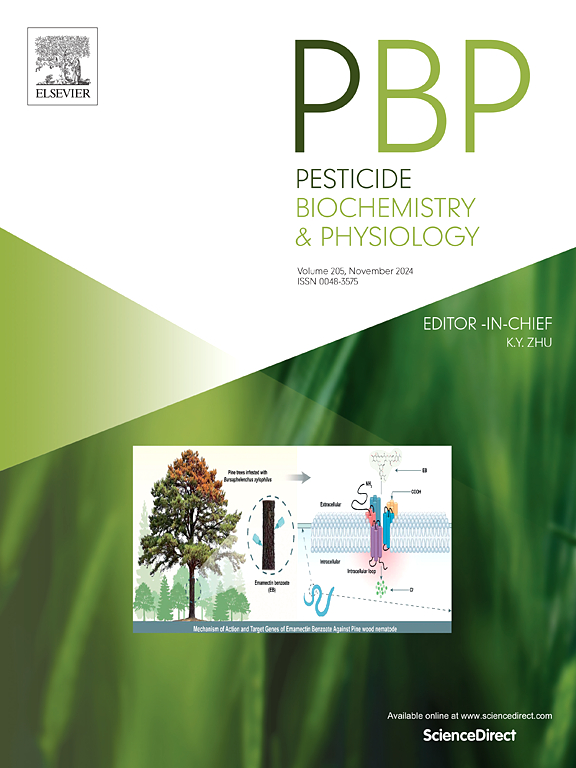Benfuracarb impairs zebrafish swim bladder development via the JNK2 pathway mediated inhibition of autophagy
IF 4.2
1区 农林科学
Q2 BIOCHEMISTRY & MOLECULAR BIOLOGY
引用次数: 0
Abstract
Benfuracarb is widely utilized for crop protection due to its effective pest control properties; however, little information is available regarding its adverse effects and possible molecular mechanisms in fish development. In the present study, benfuracarb exposure caused defects in the development and inflation of the swim bladder, as well as in the lipid metabolism of zebrafish larvae. Compared with the control, key genes involved in swim bladder development, lipid metabolism, surfactant proteins and autophagy were altered in response to benfuracarb exposure. Furthermore, potential targets of benfuracarb were identified using network toxicology and molecular docking, with c-Jun N-terminal kinase 2 (JNK2 encoded by mapk9) predicted as a critical target. Moreover, the JNK family activator anisomycin was observed to mitigate the inhibitory effects of benfuracarb on zebrafish swim bladder inflation, as well as on the expression of autophagy-related genes, suggesting that benfuracarb may inhibit swim bladder development and inflation by downregulating the JNK2 signaling pathway. Overall, this study suggests that the swim bladder might serve as a potential target organ for benfuracarb toxicity in zebrafish, providing valuable insights for assessing the environmental risks of benfuracarb.

求助全文
约1分钟内获得全文
求助全文
来源期刊
CiteScore
7.00
自引率
8.50%
发文量
238
审稿时长
4.2 months
期刊介绍:
Pesticide Biochemistry and Physiology publishes original scientific articles pertaining to the mode of action of plant protection agents such as insecticides, fungicides, herbicides, and similar compounds, including nonlethal pest control agents, biosynthesis of pheromones, hormones, and plant resistance agents. Manuscripts may include a biochemical, physiological, or molecular study for an understanding of comparative toxicology or selective toxicity of both target and nontarget organisms. Particular interest will be given to studies on the molecular biology of pest control, toxicology, and pesticide resistance.
Research Areas Emphasized Include the Biochemistry and Physiology of:
• Comparative toxicity
• Mode of action
• Pathophysiology
• Plant growth regulators
• Resistance
• Other effects of pesticides on both parasites and hosts.

 求助内容:
求助内容: 应助结果提醒方式:
应助结果提醒方式:


